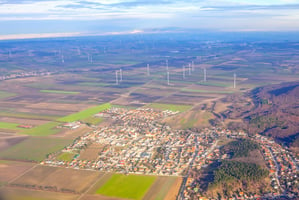April 5, 2022 By Grace Pratt, Policy Analyst
The Path Forward for “A Decade of Execution”: Key Takeaways from CESA MDF 2022
March 23, 2022
By Alex Morris, Executive Director, and Jin Noh, Policy Director
CESA hosted its 13th annual Market Development Forum (MDF) earlier this month, themed “The Decade of Execution”. The event fostered two days of action-oriented, impactful discussions that highlighted pathways to accelerate successful storage deployments in support of California's decarbonization and grid reliability goals.
We are thankful for the support and engagement of the 200+ participants who joined us in Berkeley, including regulators, utility staffers, CESA members, and special guests. Attendees had a great time networking in-person, absorbing insights from industry experts, and sharing best practices.
During each session, our featured speakers were asked to identify key areas of focus or specific actions to ensure a successful decade of execution. While this event is closed-door to media and recordings, we have distilled the most urgent action items from their responses (in no particular order):
-
Coordinate planning processes for CA - Beef-up and lean into key long-term planning processes to provide resource and locational need models. Synergize across these aforementioned planning efforts, including SB100 state planning, CPUC or other IRP(s), and CAISO TPP (or other transmission expansion planning processes in non-CAISO areas). . Doing so will aid and direct development of energy storage, new renewable deployments, and transmission planning.
-
Build our energy storage technology tool kit and work to reduce market risks now, saving us big money long-term - Save money long-term by ensuring we have a robust array of storage technologies ready to compete and de-risk the energy storage marketplace by reducing regulatory or policy, technology, and market and merchant risks. All of these steps will deliver lower development, insurance, financing, and operating costs over time.
-
Deal with supply-chain challenges - Manage and mitigate near-term and long-term supply chain risks.
-
Enable DERs - Establish and quickly clarify a single and unifying vision, roadmap, and pathway for DERs for the long term, so these resources can deploy quickly, easily, and on time.
-
Take a “build it and they will come” transmission planning and expansion approach - This approach ensures sufficient transmission is available in time, while guiding developers on where to focus development activities to achieve a successful and timely high-storage future. For example, directing policy-driven transmission expansions and storage build-out “zones” that the ISO can study and potentially authorize.
-
Make equity a top priority across the industry - Prioritize equity in terms of land use and affordability on all storage policy and state planning matters, ensuring that energy storage and new resource deployments are deployed fairly, without burdening disadvantaged groups or regions.
-
Have a Czar and ensure accountability for success – Build on coordination groups and task forces to have a high-authority individual(s) that is accountable for our success, helps us to work through challenges, and keeps us on track.
-
Focus on the energy (and not just capacity) - Modernize our planning models to solve for capacity and energy in grid modeling and new resource developing, with a focus on ‘chargeability’ for energy storage.
-
Understand the grid of the future and work backwards to ensure proper Power Systems Architecture - Clarify how the grid will need to operate with an inverter-heavy fleet and ensure what we develop now works for the envisioned future. Doing so includes establishing communication requirements or products that incentivize proper designs in the fleet we build. This concept was referred to as “power systems architecture.”
-
Get help and consider cost benefits from more regional coordination - Address and overcome barriers to regional coordination and planning which may be essential to building out and achieving CA energy storage goals and deployment requirements, while considering the cost-effectiveness for Californians of this approach versus others.
-
Support and optimally fund our critical agencies and organizations - Ensure our key agencies and organizations are staffed to oversee, regulate, and execute work in a timely manner by adding more resources to the various agencies and organizations (CPUC, CAISO, CEC, others) to support resource buildout and address policy and technical issues in timely manner.
-
Continue to tune and improve the energy market, including at CAISO - Ensure that CAISO energy markets are ready and flexible enough to accommodate energy storage, which may have unique operating capabilities and can play key balancing and flexibility roles.
As demonstrated above, the conversations at MDF ranged broadly and charted critical ideas to achieve our storage and state decarbonization goals. We hope these learnings also spark additional thinking and complementary actions for policymakers across the state, as well as among our industry colleagues, to ensure a successful decade of execution.
We welcome your feedback and collaboration across this crucial scope of work as we continue to ensure the key role storage plays in California’s grid modernization is recognized and valued. To learn more about CESA and the vital role it plays in accelerating California’s clean energy transition, please contact our Membership Manager Emily Yan at eyan@storagealliance.org.



